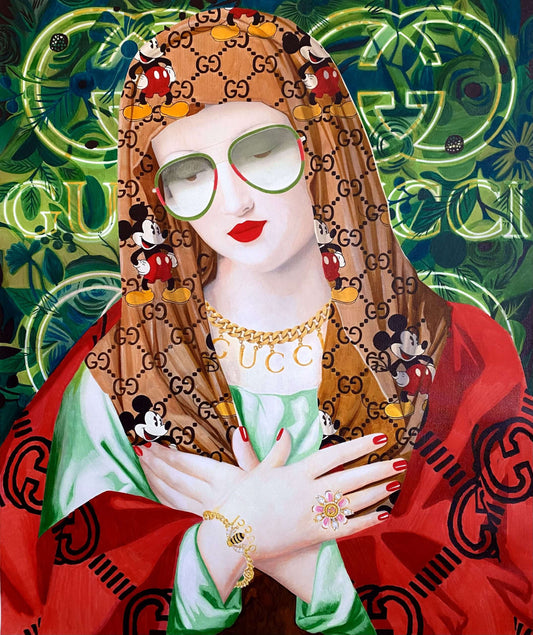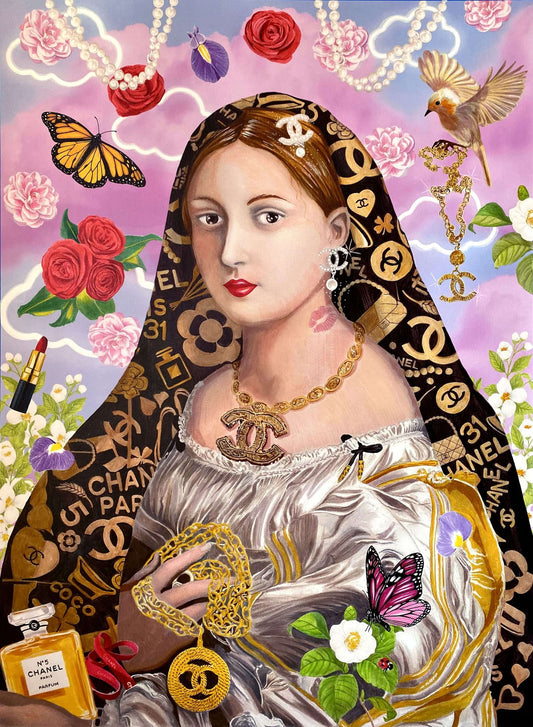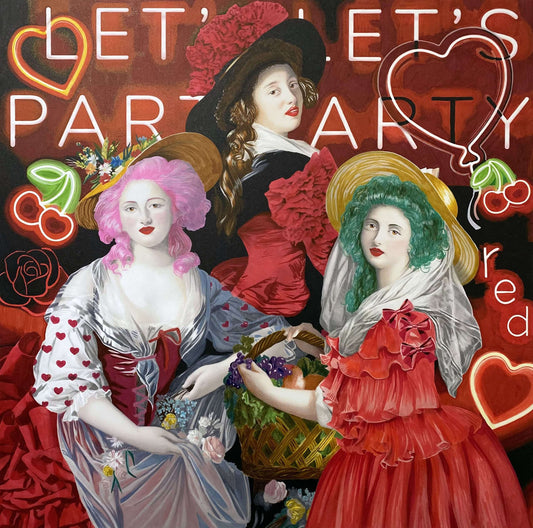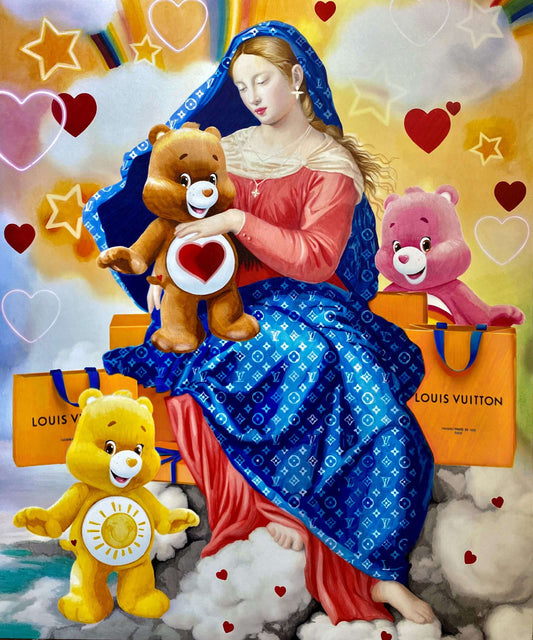
Paolo Pilotti
Paolo Pilotti is a volcanic artist who overwhelms us with faces and characters suspended between the sacred and the profane: Madonnas in total Vuitton looks, powerful men in lingerie and Snow White who, in defiance of the fairy tale and her atavistic machismo of the woman who needs to be saved, they throw away the apple and choose to eat a banana.
His works, a bit like the Divine Comedy, lend themselves to a dual level of reading. The first, frivolous, light-hearted and light-hearted: iconic and virile heroes unrecognizable after a session of botox and fillers that make us laugh, that make us want to give in to the lure of pleasure and have fun without limits.
The second, more intimate and profound, tells the story of a loyal and indissoluble love: that between the artist and the art to which he declared he was spiritually and carnally linked.
Spiritually because, for Paolo Pilotti, "art is a dogma, it is like the Trinity for Christians where art is God, the artist is the son and his work is the Holy Spirit, sent by both to save man ”.
Carnally because, for the artist, creating is as useful as breathing: art is a necessary organ for living.
It is no coincidence that at just three years old, Paolo Pilotti began to paint with his left hand, confirming the empirical theory that left-handed people are more intelligent than the norm. After art high school, he graduated in Painting at the Academy of Fine Arts and began to be an artist.
His creative world, populated by fun and irreverent exchanges of gender, sex and identity that amaze, outrage without ever being vulgar, has a strong social intent. The balance between genders, the elimination of genders, the victory over patriarchy which, hidden by the bourgeois hypocrisy of equal opportunities and political correctness, is alive and well.
Paolo Pilotti plays with psychoanalysis, with impulses, giving life to paintings that invite his audience to free themselves from the chains of conventions and give vent to their nature. Not for nothing, in one of his most iconic paintings, Freud is portrayed as half man, in a suit and tie complete with cigar, and half woman, in high heels and hold-ups.
Pilotti's art declares war on those who claim the right to judge and, precisely in the name of universal freedom, overturns the classic canons of artistic beauty.
The harmony sculpted by Phidias, painted by Leonardo and Michelangelo is subverted by a filler and botulinum aesthetic, certainly exaggerated but a reflection of a society that has the courage to surrender and accept its vices.
Tremendously human and, at the same time, divine, the works of this committed artist are liked because they speak about us.
Stylistically, his paintings are a frenetic dance that recalls the euphoria of Skopas's dancing Maenad, a vortex of lurex, latex, nudity displayed and veiled by fine embroidered fabrics. His art is a fashion show to watch front row.
Possibly with dark sunglasses, partly because it's chic and partly to hide the excesses of the night before. Or maybe, a tear from that last disastrous Tinder match.
The artist's works
-
Vendor:Paolo Pilotti
Chanel Party
Regular price €4.900,00Regular priceUnit price / per -
Sold out
-
 Sold outSold out
Sold outSold out -
 Sold outSold out
Sold outSold out -
Vendor:Paolo Pilotti
Queen Louis
Regular price €4.900,00Regular priceUnit price / per -
 Sold outSold out
Sold outSold out -
 Sold outSold out
Sold outSold out








